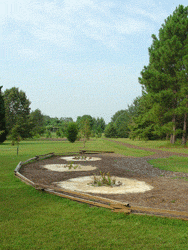Pitcher Plant Bog
Pitcher plants are carnivorous plants that trap and digest insects and small animals. There are eight species in the genus Sarracenia in Eastern North America. We have S. alata, flava, leucophylla, minor, psittacina, purpurea and rubra in our collection. The ranges of most of the pitcher plants are in the coastal plain of the Southeastern United States. They grow in sunny areas that are not shaded by trees or shrubs and that are wet most of the year like seeps, bogs and wet savannahs. The areas where they grow have acidic, nutrient-poor soils and frequent fires. The pitchers emerge from branching underground rhizomes and are actually modified leaves that holds rainwater and enzymes the plant produces to digest trapped prey.
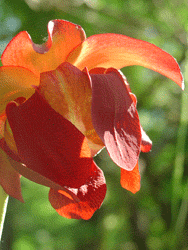
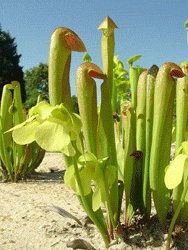
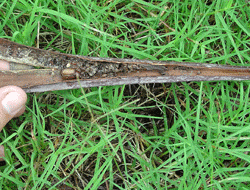
Most species of pitcher plants have a hood that partially covers the opening of the pitcher. The hood secretes nectar, which attracts the prey. Once the prey falls into the pitcher, exit is difficult due to the slippery wax coating and downward pointing hairs inside the pitcher.
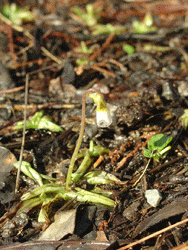
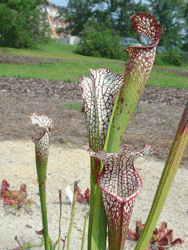
Other carnivorous plants represented in our bog include Drosera filiformis, Drosera spathulata, Pinguicula caerulea and two varieties of the well-known Venus fly trap (Dionaea muscipula). These plants employ various other trapping techniques that afford them the nutrients from their insect prey, which aid survival in the low nutrient bog environment.

